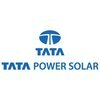Electrical Site Engineer
100+ Electrical Site Engineer Interview Questions and Answers

Asked in Polycab Wires

Q. What is the maximum voltage rating range for belted cables in use?
The maximum range of voltage rating for belted cables varies depending on the specific application and industry standards.
The voltage rating of belted cables can range from low voltage (LV) to high voltage (HV).
LV belted cables typically have a voltage rating of up to 1 kV.
HV belted cables can have voltage ratings ranging from 1 kV to several hundred kilovolts (kV).
The exact voltage rating of belted cables is determined by factors such as insulation material, conductor size, ...read more

Asked in Polycab Wires

Q. What can protect a cable against mechanical injury?
Cable protectors can safeguard cables against mechanical injury.
Cable protectors can be used to cover and shield cables from physical damage.
Flexible conduits or cable trays can be installed to provide a protective pathway for cables.
Using cable ties or clamps to secure cables in place can prevent them from being accidentally pulled or strained.
Applying cable armor or armored cables can provide additional protection against impact or crushing.
Using cable guards or ramps can p...read more
Electrical Site Engineer Interview Questions and Answers for Freshers

Asked in Polycab Wires

Q. How much torque can a synchronous motor develop?
The torque a synchronous motor can develop depends on its size and design.
The torque is directly proportional to the current supplied to the motor.
The torque also depends on the strength of the magnetic field produced by the rotor.
Larger synchronous motors can develop higher torque than smaller ones.
For example, a 500 kW synchronous motor can develop a torque of around 1500 Nm.
The torque can also be affected by factors such as temperature and load conditions.

Asked in Core Energy Systems Limited

Q. What is tranformer? Transformer is a statics device and x-mer working mutual induction and x-mer voltage convert step up and step down.
A transformer is a static device that uses mutual induction to convert voltage levels.
Transformers are used to increase or decrease the voltage in electrical circuits.
They consist of two or more coils of wire, known as windings, that are wound around a core.
The primary winding is connected to the input voltage source, while the secondary winding is connected to the load.
When an alternating current flows through the primary winding, it creates a changing magnetic field in the ...read more

Asked in Electrical Manufacturing Company

Q. what is relay and how to work for relay and type of relay.
A relay is an electrically operated switch that uses an electromagnet to mechanically operate a switch.
Relays are used to control high power circuits with low power signals
They can be used for various applications such as controlling motors, lights, and heating elements
Types of relays include electromagnetic relays, solid-state relays, thermal relays, and reed relays
Asked in Piscesia Savronik

Q. Why is single-phase voltage 220V and three-phase voltage 440V, instead of three-phase voltage being 660V?
Three phase voltage is not simply the sum of single phase voltages due to different configurations and power distribution requirements.
Three phase power systems are designed to be more efficient and balanced compared to single phase systems.
In a three phase system, the voltage between any two phases is 440V, not the sum of single phase voltages (220V).
The total power in a three phase system is proportional to the square root of 3, hence the voltage is not simply tripled.
Highe...read more
Electrical Site Engineer Jobs




Asked in Core Energy Systems Limited

Q. What is cilica gel.? Cilica gel is x-mer in moisture absorbed
Silica gel is a desiccant that absorbs moisture to keep things dry.
Silica gel is a porous, granular form of silicon dioxide.
It is commonly used in packaging to prevent moisture damage to products.
It can also be found in humidifiers, dehumidifiers, and air conditioning systems.
Silica gel changes color as it absorbs moisture, indicating when it needs to be replaced.
It is non-toxic and safe to handle.

Asked in Polycab Wires

Q. What material is earth wire or ground wire made of?
The earth wire or ground wire is typically made of copper or aluminum.
The earth wire is an essential safety component in electrical systems.
It is used to provide a path for electrical current to safely discharge into the ground.
Copper is commonly used for earth wires due to its excellent conductivity and corrosion resistance.
Aluminum is also used in some cases, especially for overhead power lines.
The earth wire is usually connected to a grounding electrode, such as a metal ro...read more
Share interview questions and help millions of jobseekers 🌟


Asked in Polycab Wires

Q. Conventional flow assumes charges flow from
Conventional flow assumes charges flow from positive to negative terminals.
Conventional flow is based on the assumption that current flows from positive to negative terminals.
This convention is used in electrical engineering and circuit analysis.
For example, in a battery-powered circuit, conventional flow assumes that electrons flow from the positive terminal of the battery to the negative terminal.

Asked in Electrical Manufacturing Company

Q. what is circuit breaker. how to work for circuit breaker and types of circuit breaker.
A circuit breaker is an electrical switch designed to protect an electrical circuit from damage caused by overload or short circuit.
Circuit breakers automatically detect faults in the electrical system and interrupt the flow of electricity to prevent damage.
They come in different types such as thermal-magnetic, magnetic, and hydraulic-magnetic circuit breakers.
Common examples include miniature circuit breakers (MCB), molded case circuit breakers (MCCB), and residual current c...read more

Asked in Hindustan Construction Company

Q. What effect does a resistor in series have on a voltage source?
Resistance connected to a source voltage in series will affect the current flowing through the circuit.
Increases the total resistance in the circuit
Decreases the total current flowing through the circuit
Causes a voltage drop across the resistor
Can be calculated using Ohm's Law: V = I * R

Asked in Polycab Wires

Q. What is the average resistance of a human body?
The average resistance of a human body is approximately 1,000 ohms.
The resistance of a human body can vary depending on factors such as skin moisture, contact area, and voltage applied.
Dry skin has higher resistance compared to moist skin.
The resistance can be affected by the presence of sweat, water, or other conductive substances on the skin.
The resistance decreases when the contact area between the body and a conductive surface increases.
The average resistance of a human b...read more

Asked in Core Energy Systems Limited

Q. What is x-mer oil? X-mer oil is cooling generation of coil
X-mer oil is a type of cooling oil used in transformers to dissipate heat generated by the coil.
X-mer oil is a mineral oil with high dielectric strength and thermal conductivity.
It is used to cool the transformer coil and prevent overheating.
The oil also acts as an insulator to prevent electrical breakdown.
X-mer oil is typically tested for purity and quality to ensure proper functioning of the transformer.
Examples of X-mer oil include Shell Diala, Cargill FR3, and ABB Envirot...read more
Asked in Creative Entrepreneurs

Q. What is the working principle of relays, current transformers (CT), and potential transformers (PT)?
Relays, current transformers (CT), and potential transformers (PT) work based on electromagnetic induction principles.
Relays work by using a small current to control a larger current, opening or closing electrical circuits.
Current transformers (CT) step down high currents to a safe level for measurement or protection purposes.
Potential transformers (PT) step down high voltages to a safe level for measurement or protection purposes.
All three devices rely on the principles of e...read more

Asked in Hindustan Construction Company

Q. How can one protect themselves from an electric shock?
To protect oneself from an electric shock, one should follow safety precautions and use proper equipment.
Always turn off the power source before working on electrical equipment
Use insulated tools and wear rubber gloves when working with live wires
Avoid working in wet conditions or with wet hands
Install Ground Fault Circuit Interrupters (GFCIs) in areas where water is present
Regularly inspect and maintain electrical equipment to prevent malfunctions
Educate yourself on electric...read more

Asked in Mtandt

Q. What is the difference between AC and DC motors?
AC motors use alternating current while DC motors use direct current. AC motors are more commonly used due to their simplicity and efficiency.
AC motors use alternating current, while DC motors use direct current
AC motors are more commonly used in household appliances and industrial applications
DC motors are often used in small applications like toys and tools
AC motors are simpler in construction and more efficient than DC motors

Asked in Polycab Wires

Q. What is the main function of a fuse?
A fuse protects electrical circuits by breaking the circuit when excessive current flows, preventing damage and hazards.
Prevents overheating: A fuse melts when current exceeds its rating, stopping the flow of electricity.
Protects equipment: By breaking the circuit, it prevents damage to appliances and devices from overcurrent.
Safety measure: Fuses reduce the risk of electrical fires caused by short circuits or overloads.
Example: A 10A fuse will blow if the current exceeds 10 ...read more
Asked in Eventide Energy

Q. What are the responsibilities of a site engineer?
A site engineer is responsible for overseeing and managing electrical construction projects on-site.
Supervising and coordinating electrical installation and maintenance activities
Ensuring compliance with electrical codes, regulations, and safety standards
Reviewing and interpreting electrical drawings and specifications
Managing project schedules and budgets
Collaborating with contractors, architects, and other stakeholders
Troubleshooting electrical issues and providing technica...read more

Asked in Wapcos

Q. What is the current carrying capacity of a DOG conductor?
The current carrying capacity of a DOG conductor depends on various factors such as material, size, and insulation.
The current carrying capacity of a conductor is typically determined by its cross-sectional area and the material it is made of.
Factors such as the type of insulation and the temperature at which the conductor operates also affect its current carrying capacity.
For example, a copper conductor with a larger cross-sectional area will have a higher current carrying c...read more

Asked in Novire Technologies

Q. What type of current is used in laptops, mobile phones, and other electronic devices?
The current used in laptops, mobiles, and electronic devices is typically low voltage direct current (DC).
Laptops, mobiles, and electronic devices operate on low voltage DC power.
The current used is usually in the range of 1-2 Amps.
The power adapters or chargers convert AC power from the wall outlet to DC power for these devices.
The DC current is used to power the internal components and charge the batteries.
Examples of current ratings for laptops and mobiles are 1.5A, 2A, et...read more
Asked in YASH ENGINEERING

Q. What technical questions do you ask in an interview?
Asking technical questions in an interview requires clarity, relevance, and a focus on problem-solving skills.
Be clear and concise: For example, ask 'Can you explain the difference between AC and DC current?'
Focus on problem-solving: 'How would you approach troubleshooting a circuit that keeps tripping?'
Use real-world scenarios: 'Describe a time when you had to design a circuit for a specific application.'
Encourage elaboration: 'Can you walk me through your thought process on...read more
Asked in Vsole

Q. How many 330W cells are required for a 10kW generation plant?
To generate 10 kW, you would need approximately 30 330W cells.
Calculate the total power output required: 10 kW = 10,000 watts
Determine the number of cells needed by dividing the total power output by the power output of each cell: 10,000 watts / 330 watts = 30 cells
Therefore, approximately 30 330W cells are required for a 10 kW generation plant

Asked in Innovel Energy Services

Q. What is your technical knowledge regarding transformers and their applications?
Transformers are electrical devices that transfer electrical energy between two or more circuits through electromagnetic induction.
Transformers are used to increase or decrease voltage levels in electrical circuits.
They consist of primary and secondary coils wound around a core made of ferromagnetic material.
Step-up transformers increase voltage for long-distance power transmission, while step-down transformers decrease voltage for distribution to end-users.
Transformers are e...read more

Asked in KEI Industries

Q. What is the Proses of LOTO? How it's works?
LOTO stands for Lockout/Tagout. It is a safety procedure used to ensure that dangerous machines are properly shut off and not started up again prior to the completion of maintenance or servicing work.
LOTO involves isolating energy sources, locking them out, and tagging them to indicate that maintenance work is being performed.
Workers involved in the maintenance work are the ones who apply the locks and tags, ensuring their safety.
Before starting work, a thorough inspection is...read more
Asked in Piscesia Savronik

Q. Why are transmission lines not typically designed for voltages like 10 kV, 30 kV, or 60 kV?
Transmission lines are typically designed for higher voltages like 110 kV, 220 kV, 400 kV, and above due to efficiency and cost considerations.
Transmission lines are designed for higher voltages to reduce energy losses during transmission.
Higher voltages allow for longer transmission distances without significant power loss.
Higher voltage transmission lines are more cost-effective compared to lower voltage lines for long-distance power transmission.
Standard transmission line ...read more

Asked in Fichtner Consulting Engineers

Q. What are the procedures involved in transformer erection?
Transformer erection involves site preparation, assembly, installation, and testing to ensure safe and efficient operation.
Site Preparation: Clear the area and ensure proper drainage to prevent flooding.
Foundation: Construct a solid foundation to support the transformer weight and dimensions.
Assembly: Assemble the transformer components, including bushings and tap changers, as per manufacturer specifications.
Installation: Use cranes or hoists to position the transformer on th...read more

Asked in Fichtner Consulting Engineers

Q. What do you consider essential for starting GIS erection work?
Essential steps for starting GIS erection work include planning, site assessment, and ensuring safety compliance.
Conduct a thorough site survey to assess ground conditions and accessibility.
Ensure all necessary permits and approvals are obtained before starting work.
Develop a detailed project plan outlining timelines, resources, and responsibilities.
Verify that all materials and equipment meet project specifications and standards.
Implement safety measures and protocols to pro...read more

Asked in Wapcos

Q. What does LA represent in a two-pole structure?
LA represents Line-to-Arc distance in a two-pole structure.
LA is the distance between the line connecting the two poles and the arc formed by the poles.
It is an important parameter for ensuring proper clearance and safety in electrical installations.
For example, in overhead power lines, LA helps determine the minimum safe distance between conductors and nearby objects.
Asked in Varanasi Smart City

Q. What are the differences between AC and DC current?
AC current alternates direction, while DC current flows in one direction. AC is used in homes; DC is used in batteries.
AC (Alternating Current) changes direction periodically, e.g., household electricity.
DC (Direct Current) flows in one direction, e.g., batteries and solar panels.
AC is typically used for power distribution in homes and industries.
DC is commonly used in electronic devices and circuits.
Asked in Pinaka Enertech

Q. How does power generation, transmission, and distribution work?
Power generation, transmission, and distribution involve converting energy, moving it over distances, and delivering it to consumers.
Power Generation: Involves converting various energy sources (e.g., fossil fuels, nuclear, renewables) into electrical energy.
Transmission: High-voltage transmission lines transport electricity over long distances to minimize energy loss.
Distribution: Local networks distribute electricity from substations to homes and businesses, often at lower ...read more
Interview Questions of Similar Designations
Interview Experiences of Popular Companies






Calculate your in-hand salary
Confused about how your in-hand salary is calculated? Enter your annual salary (CTC) and get your in-hand salary


Reviews
Interviews
Salaries
Users










